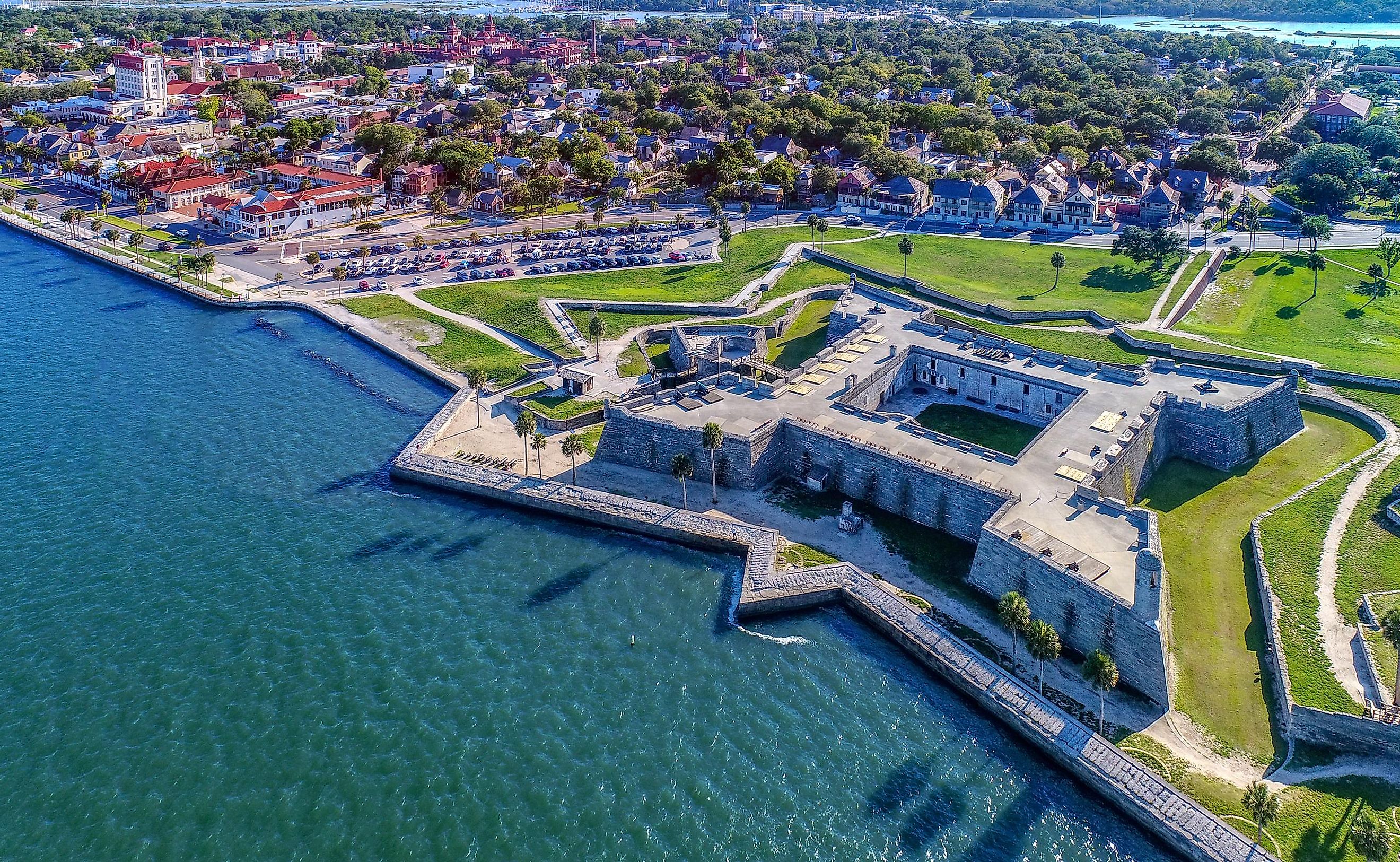
6 Most Idyllic Small Towns In The Southern United States
The Southern United States, commonly referred to as the American South, is home to the Appalachian Mountains, coastal plains, and the Mississippi Delta. It is defined by a warm climate, with some areas experiencing subtropical conditions, making agriculture a major part of its economy; crops like cotton, tobacco, and sugarcane have historically been significant. The South is also rich in cultural heritage, known for its distinct music genres, such as blues, country, and jazz, and its culinary styles that include barbecue and soul food.
The Southern US is home to idyllic small towns that embody traditional Southern hospitality, offering a picturesque lifestyle amid historical settings. Do not hesitate to book a flight or plan a road trip to these six towns.
St. Augustine, Florida
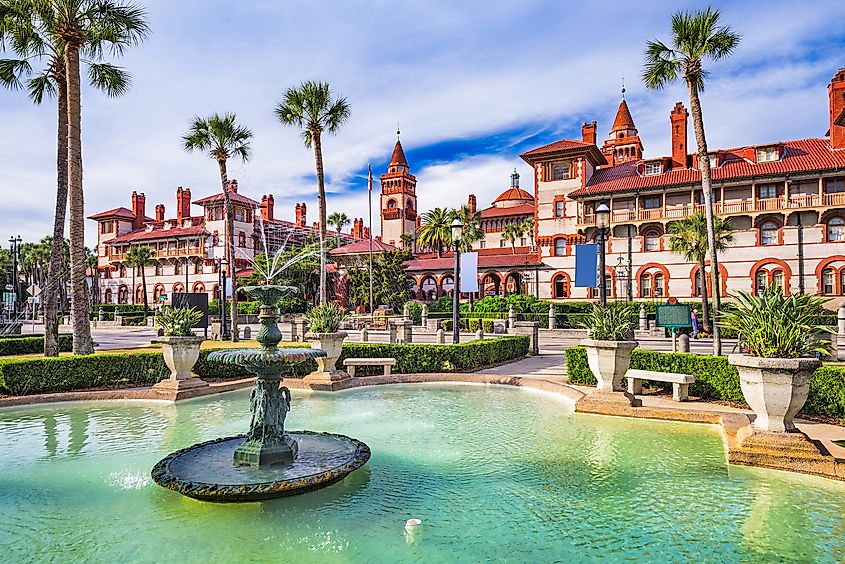
St. Augustine, Florida, is the oldest continuously inhabited European-established settlement in the continental United States. Founded in 1565 by Spanish explorers, it predates Plymouth, Massachusetts, by 55 years. Its location on the northeast coast of Florida made it a vital military outpost for the Spanish Empire and later for the British and Americans. The town's geographical setting by the Matanzas River and the Atlantic Ocean gave it a defensive advantage.
The Fountain of Youth Archaeological Park is one of the town's most known historical sites, where visitors can explore the legendary waters said to have been sought by Ponce de León. The park includes exhibits on the Timucua tribes and re-creations of the first Spanish settlements. The Castillo de San Marcos National Monument, a massive stone fortress built by the Spanish in the 17th century, symbolizes the clash between cultures that defines much of Florida’s early history. Lastly, the St. Augustine Lighthouse & Maritime Museum lets visitors climb the lighthouse for views of the Atlantic Coast.
Williamsburg, Virginia
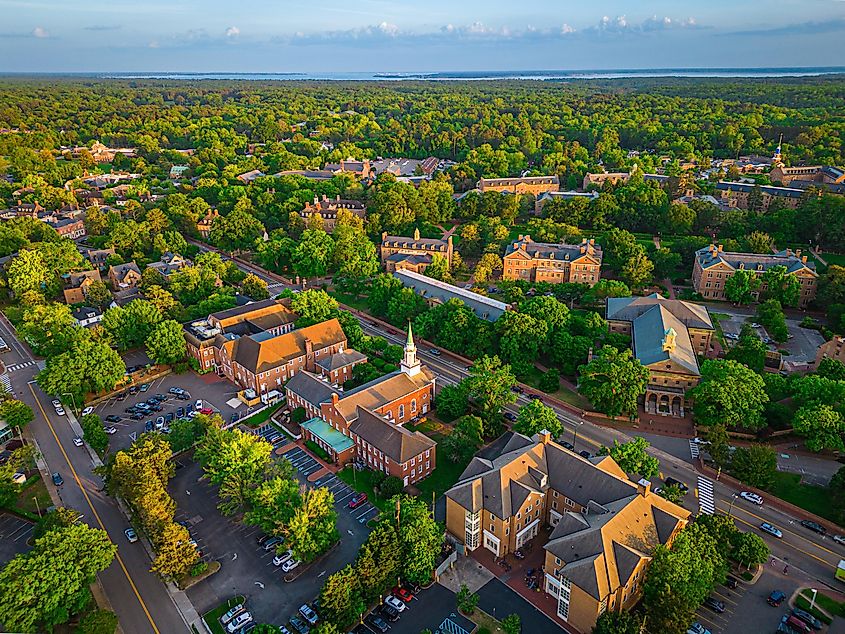
Williamsburg, Virginia, is a town steeped in American history. Established in 1699 as the capital of the Colony of Virginia, Williamsburg was at the center of political, cultural, and educational developments in early America. The town was home to the College of William & Mary, founded in 1693, the second oldest university in the United States. Williamsburg is also part of the "Historic Triangle" along with Jamestown and Yorktown, thanks to its well-preserved restoration area, Colonial Williamsburg.
Colonial Williamsburg is the heart of the town's tourist appeal, where actors and artisans in period costumes depict daily colonial life in the streets, shops, and workshops. This outdoor museum allows guests to experience first-hand the operations of a colonial town. Busch Gardens Williamsburg is a change of pace with its European-themed amusement park, featuring roller coasters, live shows, and seasonal events. The Governor's Palace, once the official residence of the Royal Governors of the Colony of Virginia, is now a reconstructed building complete with period furnishings and elaborate gardens. Tours of the palace look at the political and social life of the colonial elite.
Natchez, Mississippi
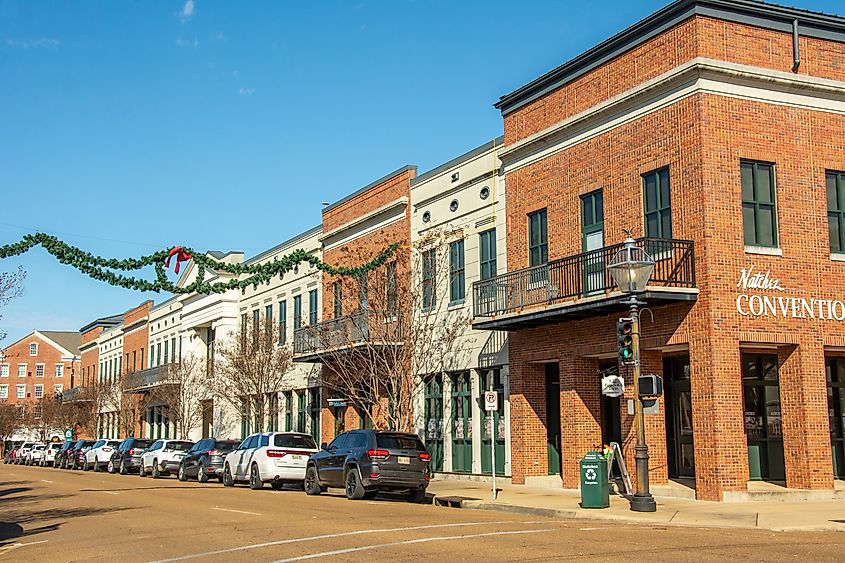
[Image suggestion: https://www.shutterstock.com/image-photo/natchez-mississippi-united-states-july-19-2148645695]
Natchez, Mississippi, is a town on the bluffs overlooking the Mississippi River. Established by the French in 1716, Natchez is one of the oldest European settlements in the lower Mississippi Valley. Throughout the antebellum period, it was a prosperous center for cotton plantations. Natchez was also known for its relatively high population of free Black people.
The Natchez Trace Parkway is a scenic drive that follows the historic travel corridor used by American Indians, settlers, and future presidents. The parkway is for driving, cycling, and hiking and has numerous trails and picnic spots. Longwood, also known as Nutt's Folly, is the largest octagonal house in the United States, with a byzantine onion-shaped dome and an unfinished interior that remains a monument to the upheaval of the Civil War. Lastly, the Natchez National Cemetery, established in 1866, is a reminder of the town's military history in a somber setting with its well-kept grounds overlooking the river.
Fredericksburg, Texas
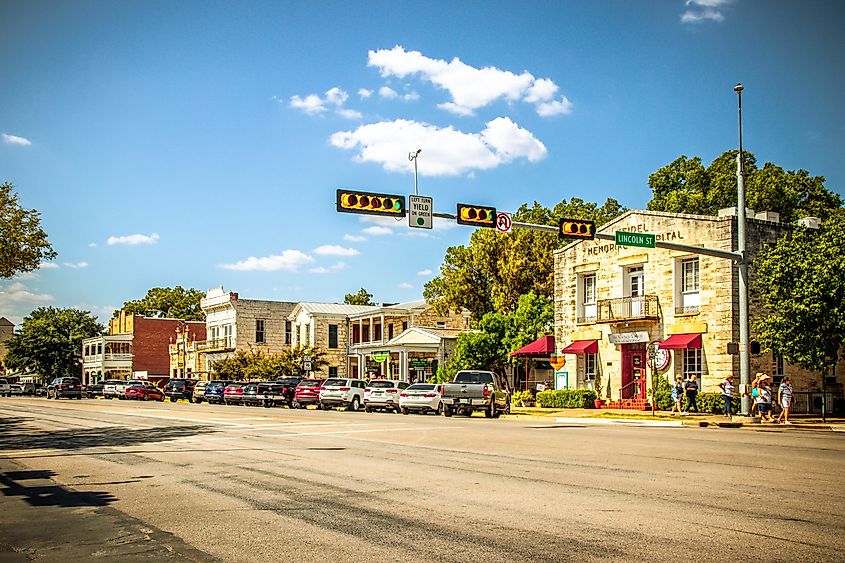
Fredericksburg, Texas, founded in 1846 by German immigrants, is a town in the heart of the Texas Hill Country. This region is known for its rolling hills and climate for growing peaches and grapes. Fredericksburg was established through the Society for the Protection of German Immigrants in Texas, aiming for a peaceful coexistence with local Native American tribes. The treaty signed with the Comanche is a rarity in American history.
The National Museum of the Pacific War is dedicated to telling the story of the Pacific Theater during World War II. The museum includes the Admiral Nimitz Museum, housed in the restored Nimitz Hotel, which has personal artifacts and exhibits related to Fleet Admiral Chester W. Nimitz, a native of Fredericksburg. Enchanted Rock State Natural Area is a change of scenery with its pink granite dome rising above Central Texas. It's a popular spot for hiking, rock climbing, and stargazing. Wildseed Farms, the largest wildflower farm in the United States, lets visitors wander through fields of blooming wildflowers and shop for seeds and garden accessories.
Hot Springs, Arkansas
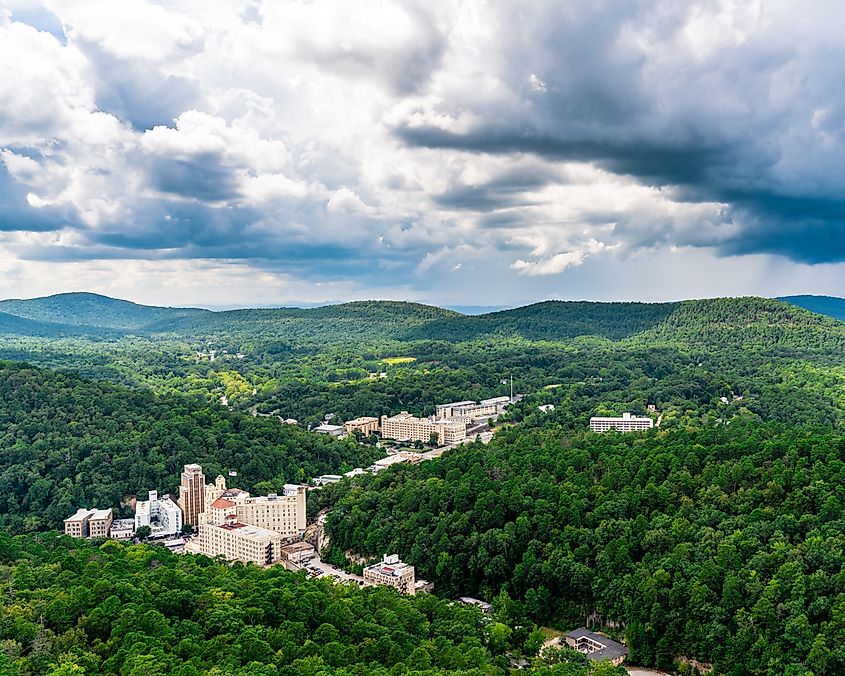
Hot Springs, Arkansas, is located in the Ouachita Mountains and is unique for its thermal springs that emerge directly from the Earth’s surface. Historically, these thermal waters were believed to have healing properties. The town was officially incorporated in 1851 and developed rapidly as a spa destination, especially during the early 20th century when grand bathhouses and hotels were built along what is now known as Bathhouse Row.
Hot Springs National Park, America's oldest federal reserve, predates Yellowstone National Park. It features bathhouses, where visitors can still bathe in the waters, and has numerous hiking trails and scenic drives. Garvan Woodland Gardens is another natural attraction, located on a 210-acre peninsula on Lake Hamilton. The gardens are part of the University of Arkansas and have botanical landscapes, architectural structures, and the Anthony Chapel, ideal for nature walks. The Gangster Museum of America shows Hot Springs’ history as a place for notorious figures during the Prohibition era. The museum has interactive exhibits and historical artifacts of the gangsters who once frequented the town.
Manteo, North Carolina
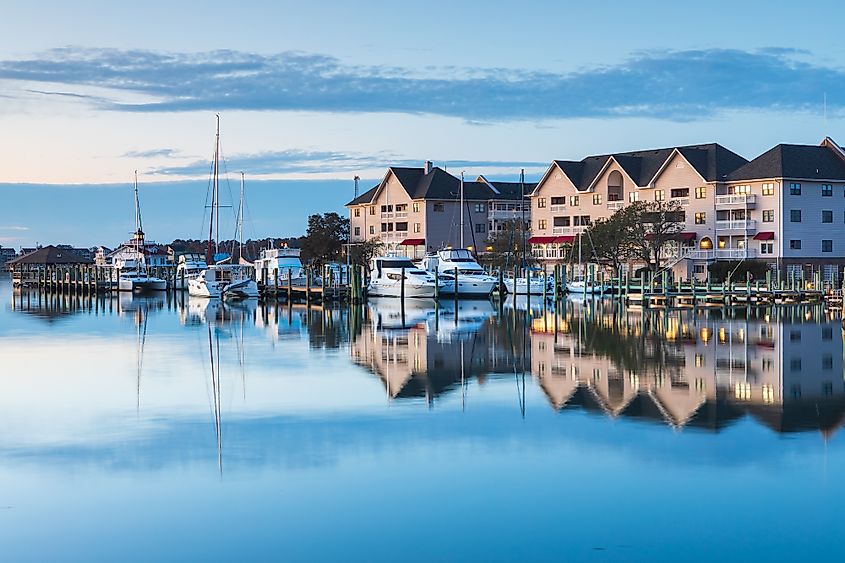
Manteo, North Carolina, is a town located on Roanoke Island, part of the Outer Banks, a stretch of barrier islands off the North Carolina coast. Rich in history, Manteo holds a special place in American lore as it is close to the site of the Lost Colony, where English settlers vanished in 1587, leaving behind the mysterious word “Croatoan” carved into a tree.
Roanoke Island Festival Park is a 25-acre interactive historic site that is a glimpse into the 16th century, representing the settlement of the Lost Colony and the Elizabeth II ship. Actors in period costumes re-enact daily life and crafts from the Elizabethan era. North Carolina Aquarium on Roanoke Island is another must-visit. Visitors can see the region's aquatic environments through marine animals, from sharks to sea turtles, and interactive programs that promote conservation. Elizabethan Gardens was created as a living memorial to the Lost Colony. The 10-acre space is filled with themed gardens, antique statues, and a collection of native and antique plants.
In Summary
The Southern US has an array of idyllic small towns that exemplify the region's history and hospitality. St. Augustine, as the oldest European-established settlement, and Williamsburg, a living museum of early American life, both take visitors back in time. Natchez has scenic beauty and a deep connection to the antebellum South, while Fredericksburg combines German heritage with Texas Hill Country. Each of these towns not only has natural beauty but also embodies the varied cultural and historical landscapes that define the American South.











